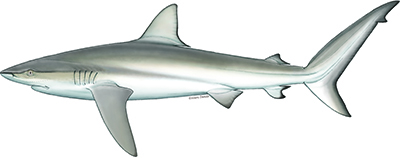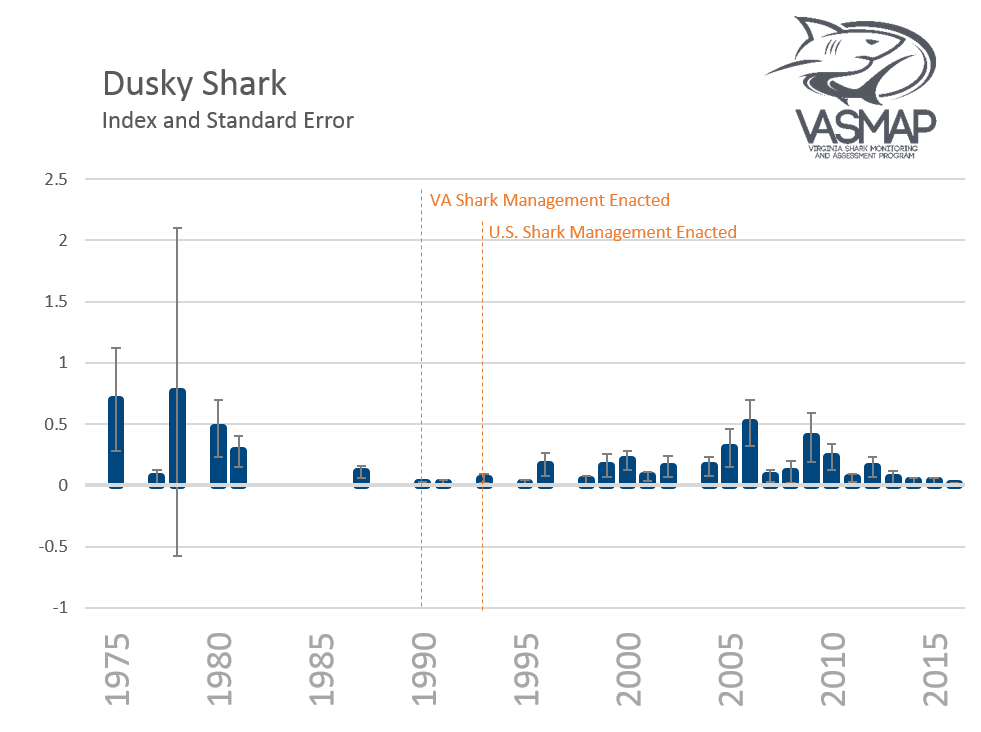Dusky Shark
Carcharhinus obscurus

Heavy fishing pressure on this species has reduced its numbers alarmingly. lt is now a rare event to see a dusky shark in the Virginia region.
Maximum size
11.8 feet (3.6 meters) total length for females and 11.1 feet (3.4 m) for males.
Geographic Range
Inhabits warm-temperate and tropical continental waters of the western North Atlantic, from southern New England south to the Caribbean and Gulf of Mexico to southern Brazil. This species undertakes long temperature-related migrations along the U.S. East Coast. Animals move north as water temperatures increase in spring and return south with the onset of fall. Although adults are more common in offshore waters, juveniles use shoals on the seaside of the Virginia barrier islands as a pupping ground.
Diet
Consists of numerous fishes such as menhaden, bluefish, tunas, mackerels, small sharks, and skates.
Depth Range
From the surf zone to depths of 1,200 feet (400 meters).
Ecology
About 10 young comprise a litter of pups that are born at about 3 feet (90 cm). A female only gives birth about every 3 years. The species grows very slowly; it matures in 17-20 years, and maximum age may exceed 50 years.
Fishing Interest
Because of its large size, the dusky shark is a popular target of recreational anglers. lt was once one of the primary species entered in shark-fishing tournaments. lt is caught in the commercial fishery, and is often taken in the offshore fishery for swordfish and tuna. The meat is very good, and the fins of a good quality for sale to make shark-fin soup. Heavy fishing pressure on this species has reduced its numbers alarmingly.
Abundance
Dusky sharks were severely overfished by both recreational and commercial fisheries from the late 1970s to the early 1990s. Data from the VIMS Shark Survey show that local populations of dusky sharks were reduced by 80%. The implementation of shark management measures in Virginia in 1990, and by the federal government in 1993, have led to a slow but steady recovery in their population.

